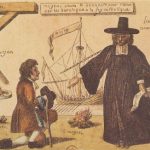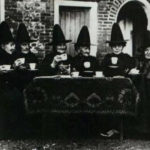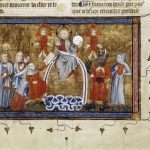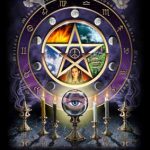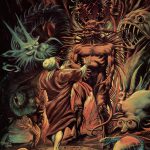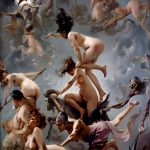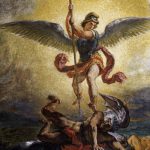The origins of witchcraft date back to the apparition of man as a thinking animal. Paintings and carvings found in caves and sepultures reveal that from the beginning man has associated magic rituals with death, birth, hunting, … .
Magic was and remains a way to explain phenomenon that goes beyond the understanding of man. Each tribe or community had its sorcerer or wizard whose function was to assist the tribe or the village in such situations as disease, bad weather, war, death and birth.
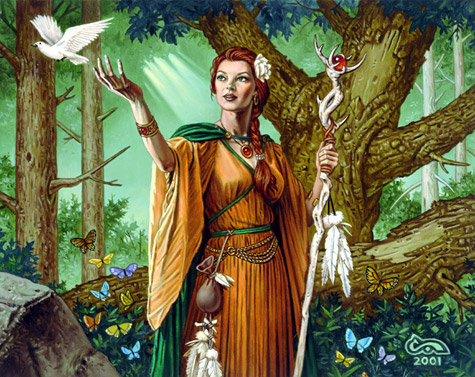
The practices involved complex rituals associated with objects and plants that were carefully transmitted from one generation to another through a secret initiation reserved to a handful of chosen individuals.
But such practices have been tolerated as long as there was no given alternative. Once science and medicine begin to explain some of the mysteries of this world, magic was suspected.
The Romans themselves put the darkest interpretations on the secret gatherings of the Christians; they were said to indulge in sensual orgies, to worship a god with an ass’s head and to kill babies for sacramental purposes. Later we hear of similar examinations on Manichean women and confessions of intercourse with “the devil”.
The Empress Theodora put to death no less than one hundred thousand members of the sect. After the Dianists of the sixth and seventh centuries had gone, we find only a few isolated executions of witches for practicing black magic until the twelfth century.
Witchcraft began to be regarded as evil when the Church becomes the official cult in Europe. Monotheism does not tolerate other gods and divinities than the one they prey and soon Christian priests and monks tried to eradicate religious beliefs that were not part of the Church.
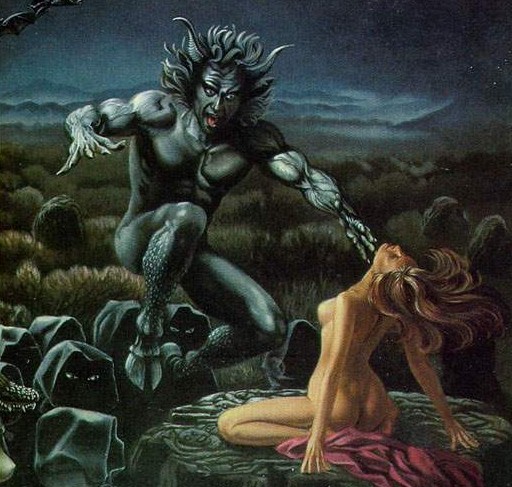
Witches and wizards were soon considered by Christian priests as dangerous rivals. But if magic meant collusion with the devil, it was precisely the elaboration of this devil-doctrine by the great theologians of the Middle Ages, which caused the appalling witch-massacres of the fifteenth, sixteenth, and seventeenth centuries.
The popular image of the goat-hooved, pointy-horned devil is a deliberate corruption by the early missionary church of the European Pagan Horned God, who has been depicted in Greece as Pan, in the Nordics as Thor or Woden and in ancient Gaul as Cernunnos.
The several heads that the Devil sometime carries is probably coming from Janus, the two-faces pagan god. The kiss on the buttocks is a demonization of the “peace kiss” of the pagan rites.
In the same way, the sabbaths are probably a perverted image of the antique Priapées, ludi compitales, Bacchanales that were celebrated in Greece and Rome. Making indigenous gods into evil beings was the early church’s most reliable method of gaining converts.
Jewish and muslims were also official opponents to the Church and were considered as heretics and demons. Even the new territories discovered in the XVIth centuries were considered as the kingdom of the Devil.
Local pre-christian cults in South America and India were condemned by missionaries who replaced it by the Christian religion.
Walter Stephens, a professor of Italian Studies at The Johns Hopkins University, believes witches were a part of folklore that was exploited by rational men who were seeking to redeem their religious worldview in an increasingly skeptical world.
In the recently published Demon Lovers: Witchcraft, Sex and the Crisis of Belief, Stephens argues that belief in witches became a useful tool for late-medieval theologians to explain the existence of evil in a world ruled by a good and loving God. And ultimately, he says, witches and the demons they communed with served as a proof of the world of spirit, of the truth of the Bible, and of the very existence of God.
Such proof was needed, he says, because of the anxiety felt by theologians of the era, who were attempting to justify their beliefs as the age of reason and skepticism dawned.
“By the 15th century, a lot of Christian clerics are quite worried about the reality of the spiritual world,” says Stephens, sitting back in his campus office as a small tin witch keeps watch from a bookshelf. “They began looking for proof that it isn’t just an imaginary world dreamed up by us in order to console ourselves with the fact that someday we have to die.”
One way to prove the world of the supernatural is for humans to somehow have bodily experience of it.
“So what ends up coming out is the accusation that certain people are having physical relationships with demons,” Stephens says. “That is, they are interacting with them bodily in ways that include flying, that is straddling a broomstick and being carried by a demon, and also having sex with a demon.”
The witch hunts that ensued, which began in the mid-1400s, were attempts by religious authorities to find evidence to prove their theories, evidence that inevitably was extracted through torture.
Christianity was imposed by force upon a reluctant world. It is only by the bloody use of force on a colossal scale that the Church maintained its dominion for so many centuries.


